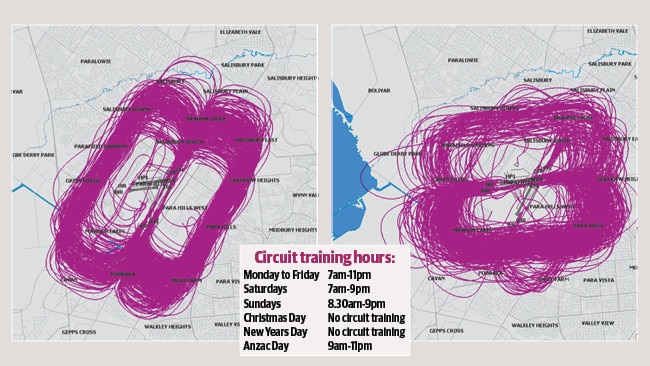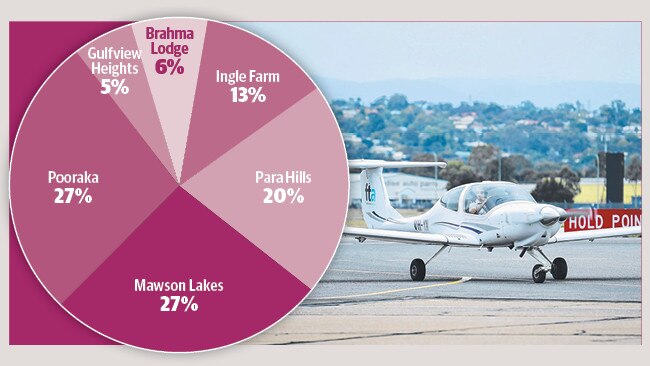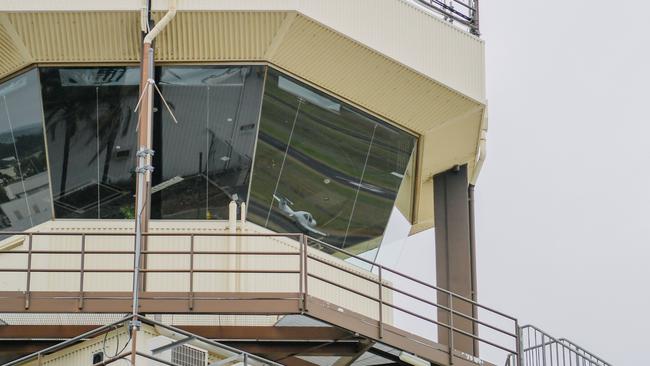Airservices Australia says it’s powerless to stop training aircraft flying so often over Parafield Airport
THOUSANDS of residents living near Parafield Airport say their lives are being made miserable by flights relentlessly buzzing overhead — and the federal air traffic control agency is powerless to intervene.
THE federal agency responsible for air traffic control admits it is powerless to stop training aircraft flying so often around Parafield Airport, creating incessant noise.
Airservices Australia — which operates the control towers at Parafield — investigated 46 residential complaints received in 2017, among them concerns that flights keep children awake.
It says it could reduce the operating hours of the towers but this was unlikely to substantially reduce the noise created by flight training aircraft.
The only other option was asking aviation schools to voluntarily cut the amount of flights and operating hours.
Air Services Australia said a successful outcome was dependent on co-operation from the airport’s operators, Adelaide Airport Ltd, and the five schools at Parafield — which it was unlikely to receive.

“Only one feasible opportunity that Airservices could play a role in implementing was identified — restricting the number of aircraft in the circuit during tower hours,” says its report.
“This could not be implemented by Airservices alone and would require a joint approach with the airport and flight training school operators. However, this would not address the community concern about circuits occurring before and after tower hours.”
Parafield is used for more than 200,000 training flights each year. The schools operate seven days and nights a week — except Christmas and New Year’s Day — from 7am or 8.30am until 10pm or 11pm. Flight noise has been a controversial issue for decades, particularly with the development of areas such as Mawson Lakes under flight circuits.
Complaints about flight frequency had overtaken those about the noise.

Residents have told Airservices they were being disturbed while watching TV, spending time in their gardens, talking on the phone, entertaining or trying to get themselves or their children to sleep.
Airservices said it had examined solutions suggested by residents, including relocating the airport, insulating homes, restricting training aircraft to those which made less noise and asking flight training schools to install mufflers on their planes.
But there were no regulations controlling noise levels for aircraft and no legal mechanisms to enforce noise limits.
The other option of reducing the hours of air traffic controllers had been examined but also ruled out.
The controllers are allowing up to nine aircraft to simultaneously fly in two circuits above the airport at varying altitudes, with trainee pilots taking off, flying a loop, touching down and then taking off again.
When the towers are not operating between 7am and 7pm on weekdays and 8am and 6pm on weekends, five training aircraft are allowed to fly at any one time.
There is no curfew, with training flights often still happening until 11pm. The introduction of a curfew would require federal Parliament passing legislation.
Airservices said reducing the amount of planes flying or the hours they could operate would have “limited effect” as “noise abatement procedures are not mandatory and it is unclear what, if any, action could be taken against pilots who contravened the provision”.
“Secondly, while this proposal could have negative consequences in that any restriction in the number of aircraft in the circuit may result in longer hours spent circuit training and/or demand from operators to increase designated circuit training hours in order to maintain the same throughput of students,” says the report.

The other option of reducing the operating hours of the control towers, while “feasible”, could not be “imposed unilaterally by Airservices”.
It would require the agreement of Adelaide Airport Ltd and the aviation training schools, extensive consultation with other stakeholders, thorough assessment of the safety implications and the approval of the Civil Aviation Safety Authority (CASA).
“This investigation explored what would be required to achieve this outcome and found that it would take a significant amount of work over two years or more,” says the report.
“Weighing the large amount of work that would be required, with no guarantee of a successful outcome, against the small size of the potential noise improvement that could result (five aircraft in the circuit rather than six for an extra hour each weekday), on balance this is not an option that Airservices intends to pursue at this time.”
Airservices said it would reconsider the decision “ should circumstances change in the future”.
Salisbury Council says it has been working closely with the operators of Parafield Airport to minimise noise complaints and is regularly in contact with Adelaide Airport Ltd about its masterplan for Parafield, which aims to increase annual flights from the existing 213,990 a year to 339,300 by 2037.
Training flights from five aviation schools operating from the airport accounted for 94 per cent of the annual aircraft movements.
Mayor Gillian Aldridge said Parafield Airport was a major employer, with 1100 people on-site and 261 people off-site – a total of 1361 jobs.
The full economic impact associated with Parafield Airport – which has been operating since 1927 – was estimated to be a contribution of $263 million to the state’s economy.
“However, the airport and its operations also need to balance the important economic benefits and services it provides with its role as a neighbour to a range of land uses,” said Ms Aldridge.
“For example, the projected increase in flight numbers for Parafield Airport, which are the product of successful flight training programs and general aviation activities, needs to be actively managed to contain the impact of these activities upon surrounding land uses.”
Ms Aldridge said these impacts included the noise from planes and impending restrictions upon the development on land covered by proposed new public safety zones at either end of its four runways.
“The Parafield Airport Master Plan 2017 attempts to identify these issues, put in place management and monitoring strategies, and balance various needs and interests.”
